It wasn’t until I started flicking through my photos that I noticed a recurring theme—manhole covers. Not just any covers, but beautifully designed, city-specific works of art scattered across Japan.
These are part of Japan’s decorative manhole cover culture, known locally as dezain manhōru (デザインマンホール). What started as a public works project in the 1980s has become a nationwide tradition, turning utility lids into street-level storytelling—often painted, sometimes embossed, and always reflecting something of the local place.
What is dezain manhōru / Japanese manhole cover art?
Japanese manhole cover art—dezain manhōru—refers to the tradition of decorating sewer and utility covers with regional or cultural imagery. Many are custom-designed by local governments and reflect local symbols, flowers, historical references, or landmarks. While some are colourfully hand-painted, others remain in striking metal relief. There are over 1,700 unique designs across Japan, and they’ve become a surprising yet popular form of civic pride—and a quiet photo challenge for visitors in the know.
Cool examples of Japanese dezain manhōru
Here are some of the cool examples of dezain manhōru I spotted on my Japan Cruise, back in 2023.
Nigata
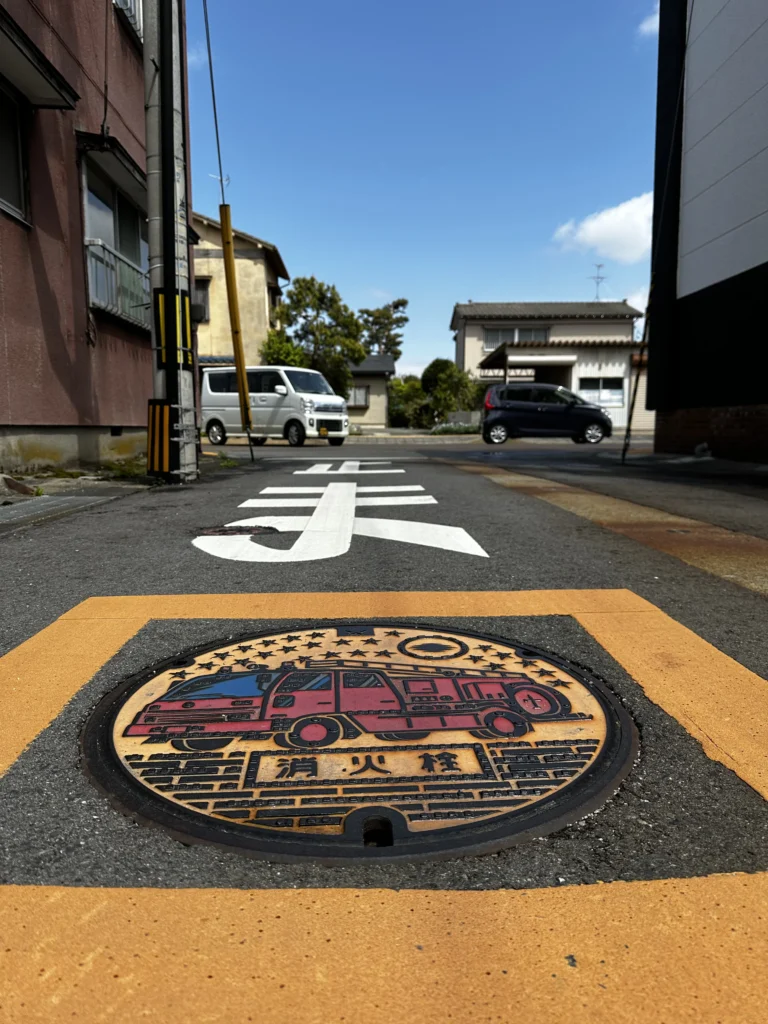
This dezain manhōru features a bright red fire engine against a pale yellow background, framed by a painted yellow border. It’s not just decorative—it indicates the location of a fire hydrant below. These utility-specific covers are part of the broader tradition, combining function with unmistakable flair.
Tokyo
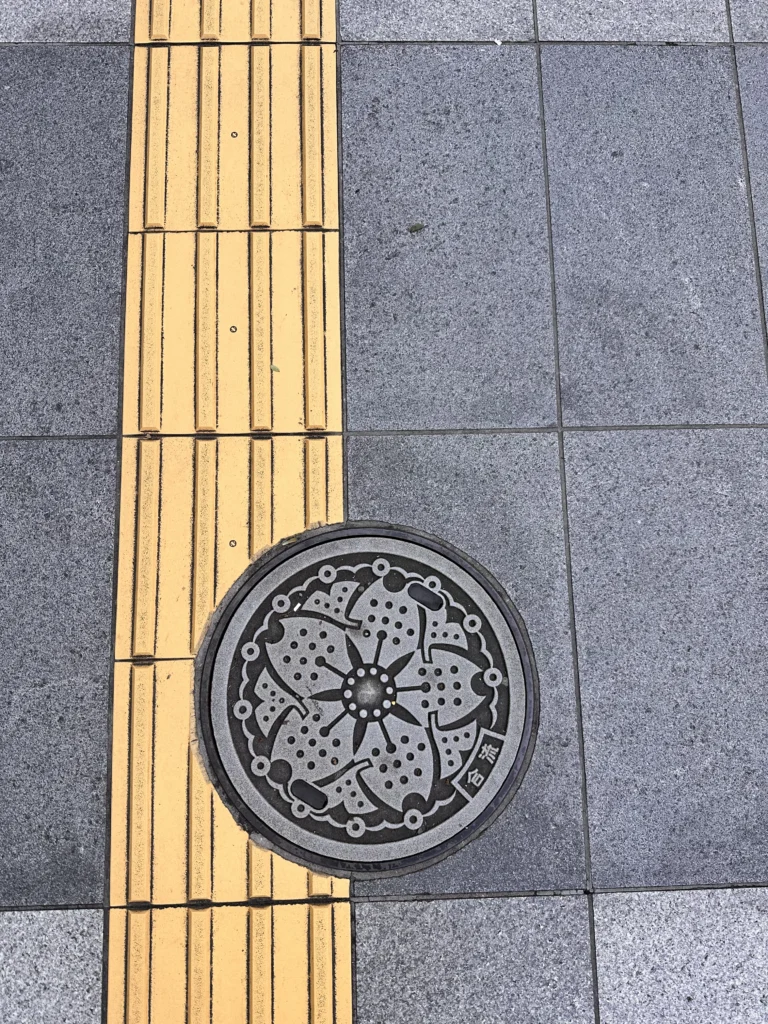
Sleek and monochrome, this Tokyo manhole cover features a symmetrical, abstract floral design that blends effortlessly into the surrounding paving. Its understated style feels fitting for Japan’s capital—elegant, structured, and quietly distinctive. Note the raised yellow tactile paving nearby, used across Japan to support visually impaired pedestrians.
Yokohama
I spotted two different dezain manhōru in Yokohama. It was getting to the end of my Japan Cruise so I must have got my eye in by then!

This unpainted manhole cover uses clean, industrial lines to depict the Yokohama Bay Bridge rising above the port. The circular gear-like border enhances the mechanical theme, suggesting the city’s status as a major shipping hub. It’s elegant in its simplicity — a bold contrast to the cartoon-like commemorative cover, below.
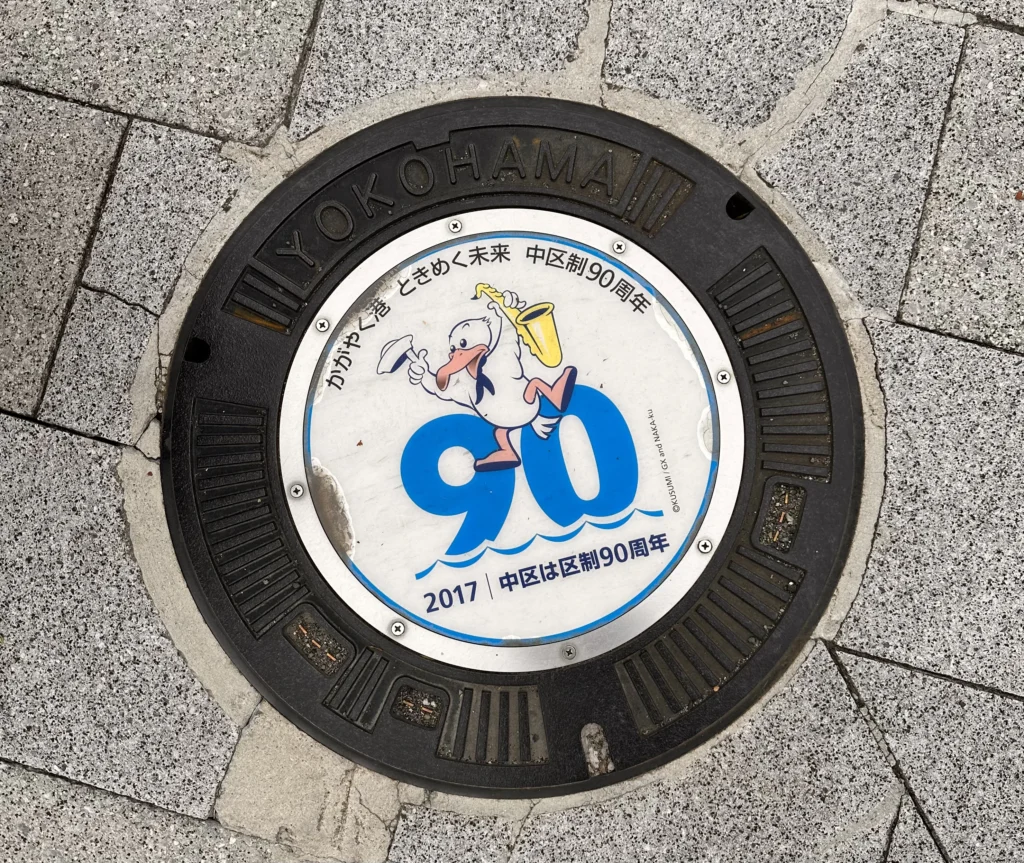
This colourful design features a cheerful seagull playing a saxophone and waving a captain’s hat above a bold blue “90.” It celebrates the 90th anniversary of Naka Ward in Yokohama, marked in 2017. The text around the cover reads “Brilliant harbour, sparkling future” — a playful and civic-minded touch typical of Japanese dezain manhōru.
Hakodate
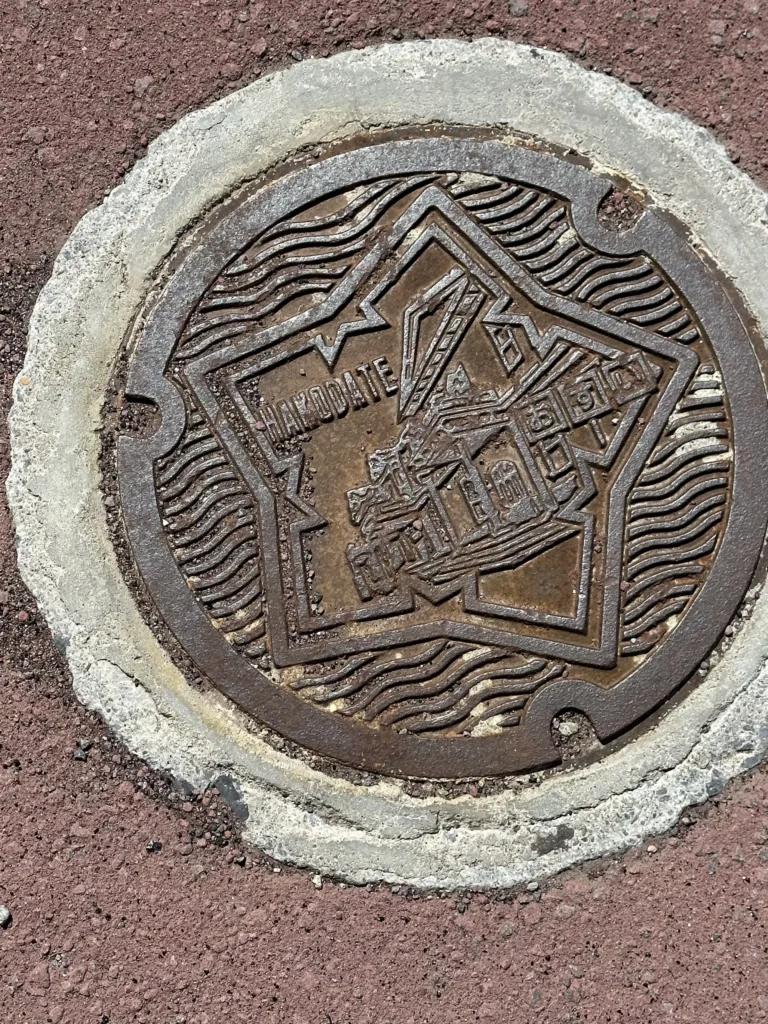
This decorated manhole cover from Hakodate features a raised outline of Goryōkaku, the star-shaped fort that defines the city’s history and layout. You can see the five-pointed star clearly forming the boundary of the design, with architectural details inside referencing the Goryōkaku Tower and surrounding structures. Wavy lines around the edges hint at Hakodate’s coastal setting.
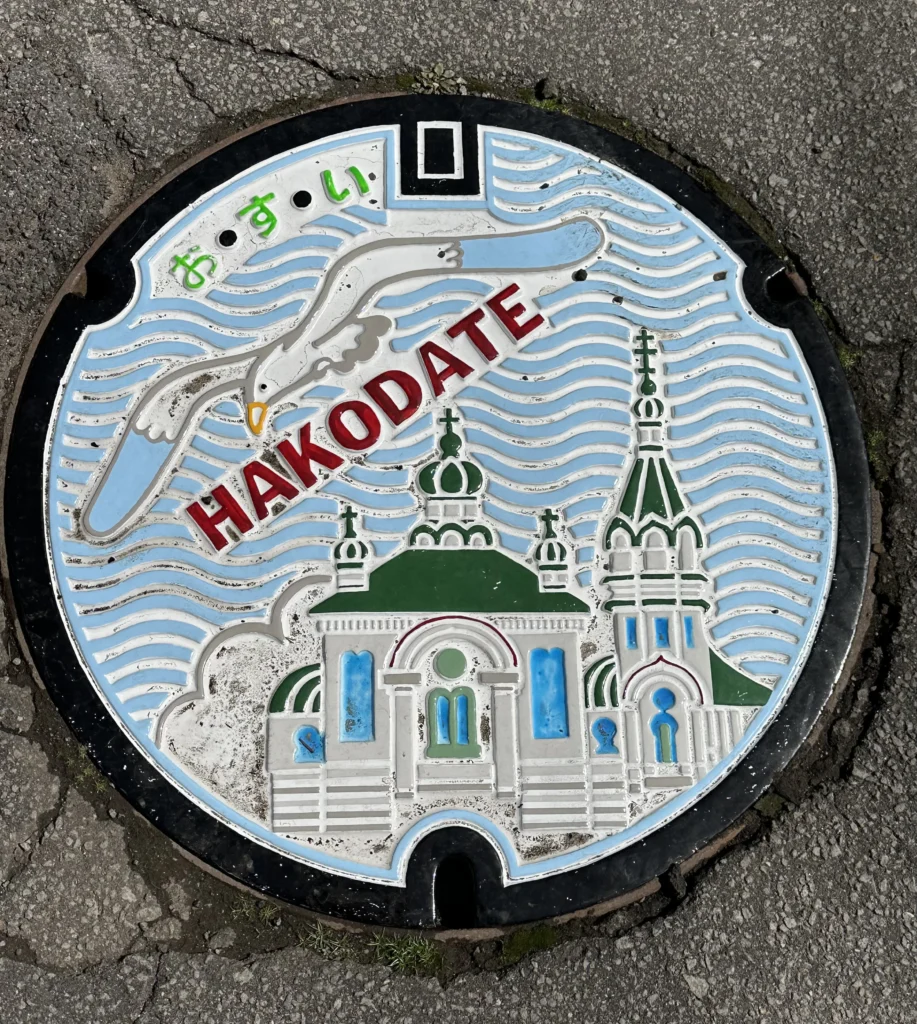
This colourful Hakodate manhole cover offers a colourful depiction of two of the city’s best-known symbols: the Orthodox Church of Hakodate with its green domes and distinctive spires, and a soaring seagull, a nod to the city’s coastal location. The swirling wave pattern in the background reinforces the maritime connection, and the large “HAKODATE” text makes it instantly recognisable.
—
There’s something about a cruise that lingers long after you’ve stepped ashore. In two weeks, you see more than most holidays could ever squeeze in — moments you don’t always catch in the rush, but that unpack themselves later. Spotting these manhole covers was just one small detail at the time, but learning more about dezain manhōru afterwards made it all the more rewarding. Another reminder of why a luxury cruise through Japan leaves such a lasting impression.
